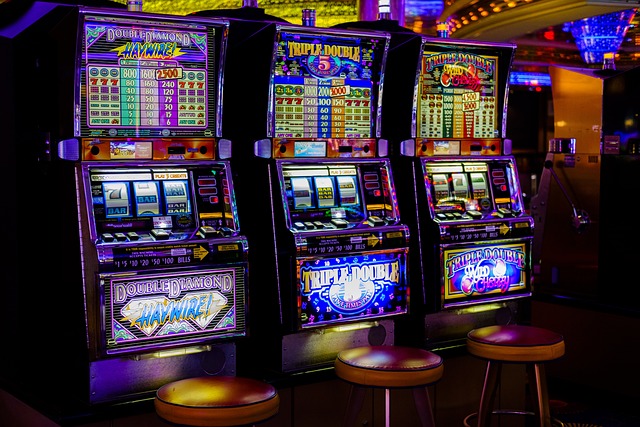Slots advertise two numbers that shape your experience: return to player (RTP) and volatility. RTP is the long-run percentage a game pays back across millions of spins, while volatility describes how those returns arrive—steady drips or wild swings. Players often chase high RTP as if it guarantees short-term success, but variance can drown out a… Continue reading Volatility vs RTP: Which Slot Metric Matters More for Your Bankroll
Author: Alexandra Crosby
Cluster Pays Explained: Why Grid Slots Feel So Addictive
Grid-based slot machines have surged in popularity, thanks largely to their use of “cluster pays” instead of traditional paylines. Unlike classic slots where wins come from lining up symbols across fixed lines, cluster pays reward groups of identical symbols that touch horizontally or vertically. This simple shift changes the psychology of play. The visual impact… Continue reading Cluster Pays Explained: Why Grid Slots Feel So Addictive
On-Chain Casinos: How Smart Contracts Handle Bets and Payouts
The rise of blockchain has transformed gambling from opaque systems into transparent, code-driven experiences. On-chain casinos operate directly through smart contracts—self-executing pieces of code that automate wagers, payouts, and game logic. Instead of trusting a centralized operator to shuffle cards or release funds, players interact with protocols that publish rules openly on the blockchain. This… Continue reading On-Chain Casinos: How Smart Contracts Handle Bets and Payouts
House Edge Transparency: Auditing Odds with Public Ledgers
For decades, understanding a casino’s true house edge meant trusting marketing pages or third-party reviews. Public blockchains change that dynamic by turning odds into verifiable facts. When wagering logic, random number generation, and payout tables are encoded in smart contracts, anyone can inspect the math or replay past results. That does not magically make every… Continue reading House Edge Transparency: Auditing Odds with Public Ledgers
American vs Decimal Odds: Converting Quickly Under Pressure
Odds formats are more than regional preferences—they shape how you calculate payouts, implied probability, and betting value. American odds dominate in the United States, while decimal odds are standard in Europe, Australia, and online sportsbooks worldwide. If you switch between books or shop lines across markets, you need to convert quickly without losing clarity. The… Continue reading American vs Decimal Odds: Converting Quickly Under Pressure
Closing Line Value (CLV): Why Beating the Market Matters
In sports betting, the difference between casual play and long-term success often comes down to closing line value, or CLV. This metric compares the odds you locked in with the final odds offered at kickoff or tip-off. If you consistently place bets at better numbers than the closing line, you are effectively “beating the market.”… Continue reading Closing Line Value (CLV): Why Beating the Market Matters
Inside a VR Casino: UX Walkthrough from Lobby to Cashier
Stepping into a VR casino replaces flat menus with a place that feels designed to be walked, not clicked. Your headset drops you in a lobby where sound, sightlines, and signage steer attention toward featured tables, tournaments, and social hubs. Instead of scrolling carousels, you follow illuminated floor paths, room-scale posters, and spatial audio that… Continue reading Inside a VR Casino: UX Walkthrough from Lobby to Cashier
Haptics and Presence: Do Tactile Cues Change Risk Behavior?
Virtual reality and modern mobile controllers have brought touch into gambling in a way that clicks never could. Subtle vibrations for chip placement, a stronger buzz for a win, and lingering pulses for bonus rounds make outcomes feel embodied, not abstract. Presence amplifies that effect: when your hands “hold” chips and your body occupies a… Continue reading Haptics and Presence: Do Tactile Cues Change Risk Behavior?







